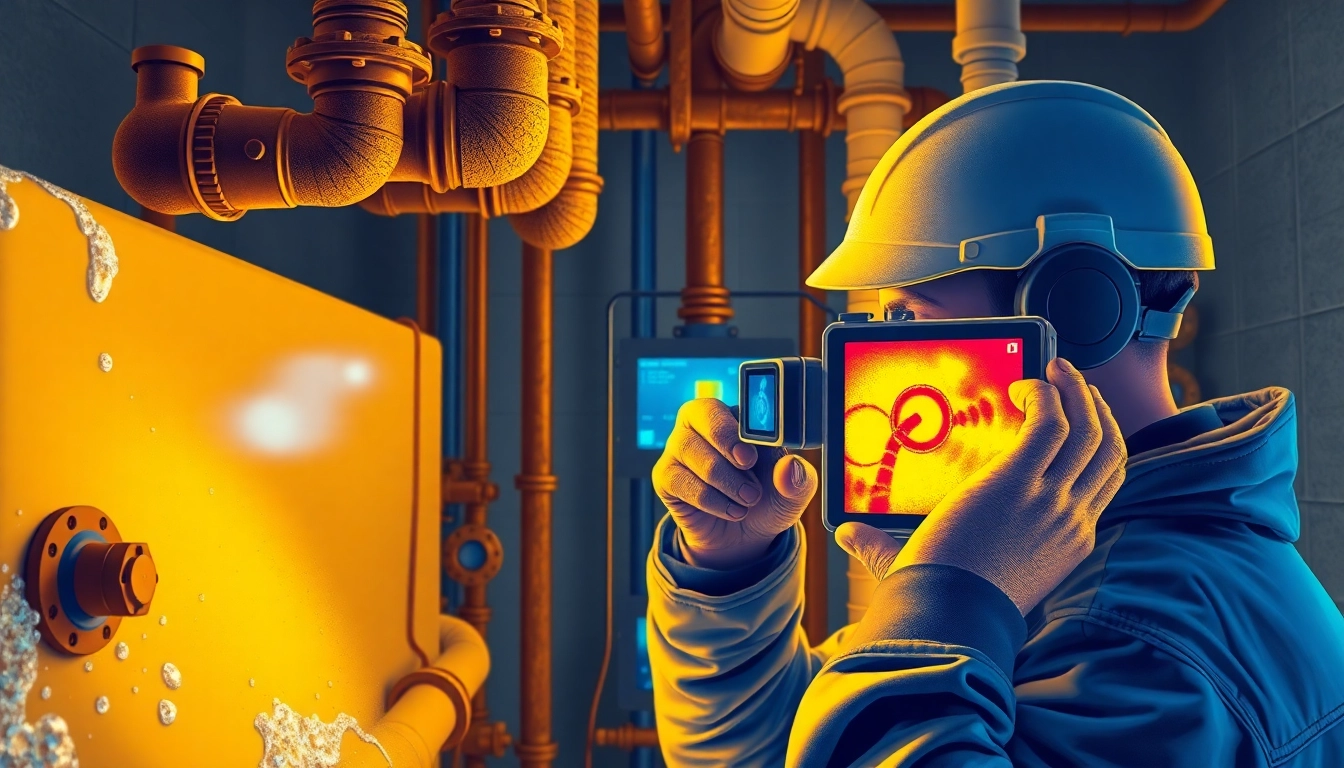Understanding Central Heating Leak Detection Basics
What is Central Heating Leak Detection?
Central heating leak detection refers to the methods and tools used to identify leaks in central heating systems. Such leaks pose significant risks, from causing water damage to increasing energy costs, and can affect the performance of the entire heating system. Understanding and implementing effective leak detection techniques is essential for homeowners and property managers to maintain system efficiency and prevent costly repairs. Engaging experts in Central Heating Leak Detection can yield the best results, but being informed about your system is equally crucial.
Common Causes of Central Heating Leaks
Central heating leaks can arise from various factors, including:
- Corrosion: Metal pipes can corrode over time, especially if the water quality is poor, leading to leaks.
- Joint Failure: Connections between different parts of the heating system may weaken and develop leaks.
- Temperature Changes: Expansions and contractions of pipes during heating cycles can stress joints and lead to failures.
- Physical Damage: Accidental damage from construction works or maintenance activities can compromise pipe integrity.
Importance of Early Detection
Early detection of leaks is crucial in minimizing damage and costs. If unnoticed, leaks can lead to:
- Increased water bills due to wasted energy and resources.
- Potential damage to floors, walls, and ceilings.
- Growth of mold and mildew in damp areas, posing health risks.
- System inefficiency, requiring more energy consumption to achieve desired heating levels.
Identifying Signs of Central Heating Leak
Visual Indicators of a Leak
Several visual cues can indicate a central heating leak:
- Water Pools: Visible water accumulation around the boiler or heating pipes suggests a leak.
- Damp Patches: Walls or ceilings in contact with heating components may develop damp patches or dark stains.
- Rust and Corrosion: Signs of rust on pipes or fittings can indicate slow leaks that need immediate attention.
Unusual Noises in Central Heating Systems
Heated water travels through pipes, and any irregular sounds could signal a problem:
- Gurgling Sounds: This can indicate air trapped in the system or the presence of water leaks.
- Banging or Clanging: Often caused by water hammer, this can signify an improper water flow due to leaks.
Pressure Drop Measurements
Monitoring the system pressure can reveal underlying issues:
- Significant pressure drops are a telltale sign that there may be a leak in the system.
- Typically, a healthy system should maintain consistent pressure. Regular checks can prevent major issues.
Tools and Techniques for Central Heating Leak Detection
Using Thermal Imaging for Leak Detection
Thermal imaging cameras can be extremely effective in leak detection:
- These devices detect temperature differences in walls and floors, highlighting cold spots indicative of leaks.
- Thermal imaging not only identifies leaks but also pinpoints the exact location, reducing the need for invasive checking.
Employing Gas Tracing Methods
Gas tracing can be another reliable method for locating leaks:
- This technique involves using a detectable gas that can be added to the heating system.
- Specialized equipment can then trace the path of the gas and pinpoint any leaks in the system.
When to Use Professional Equipment
Sometimes, advanced detection methods require professional tools:
- If DIY methods do not yield results or if the leak source is difficult to trace, hiring a professional is advisable.
- Professionals have access to high-end equipment such as acoustic leak detectors and gas analyzers, which can vastly improve detecting accuracy.
Step-by-Step Process for Effective Central Heating Leak Detection
Initial Inspection and Assessment
Begin by assessing the overall condition of your heating system:
- Check for any visible signs of wear or damage around pipes, valves, and the boiler.
- Ensure that all gauges and readings are within the normal operating ranges.
Utilizing Diagnostic Tools
Incorporate diagnostic tools into your checking process:
- Utilize pressure gauges to check for drops in system pressure.
- If engaging thermal imaging, scan the relevant areas to identify temperature inconsistencies.
Documenting Findings and Next Steps
Keep records of your inspections:
- Document any signs of leaks, unusual readings, or conditions that need addressing.
- Plan follow-up visits or notify professionals if major issues arise based on your findings.
Maintenance Tips to Prevent Central Heating Leaks
Regular System Checks
Perform routine checks to keep your system in optimal condition:
- Regularly inspect and maintain your heating system to prevent unexpected failures.
- Look for leaks during annual servicing to catch any issues early.
Importance of Professional Servicing
Engaging professionals can enhance system reliability:
- Professional technicians are trained to spot signs of wear and can recommend appropriate actions.
- They often have industry insights and access to the latest technologies, preventing issues before they escalate.
Enhancing System Longevity through Care
Taking proactive measures is essential for longevity:
- Ensure pipes are insulated to reduce wear from temperature fluctuations.
- Correctly balancing the system can reduce stress on any individual components.


